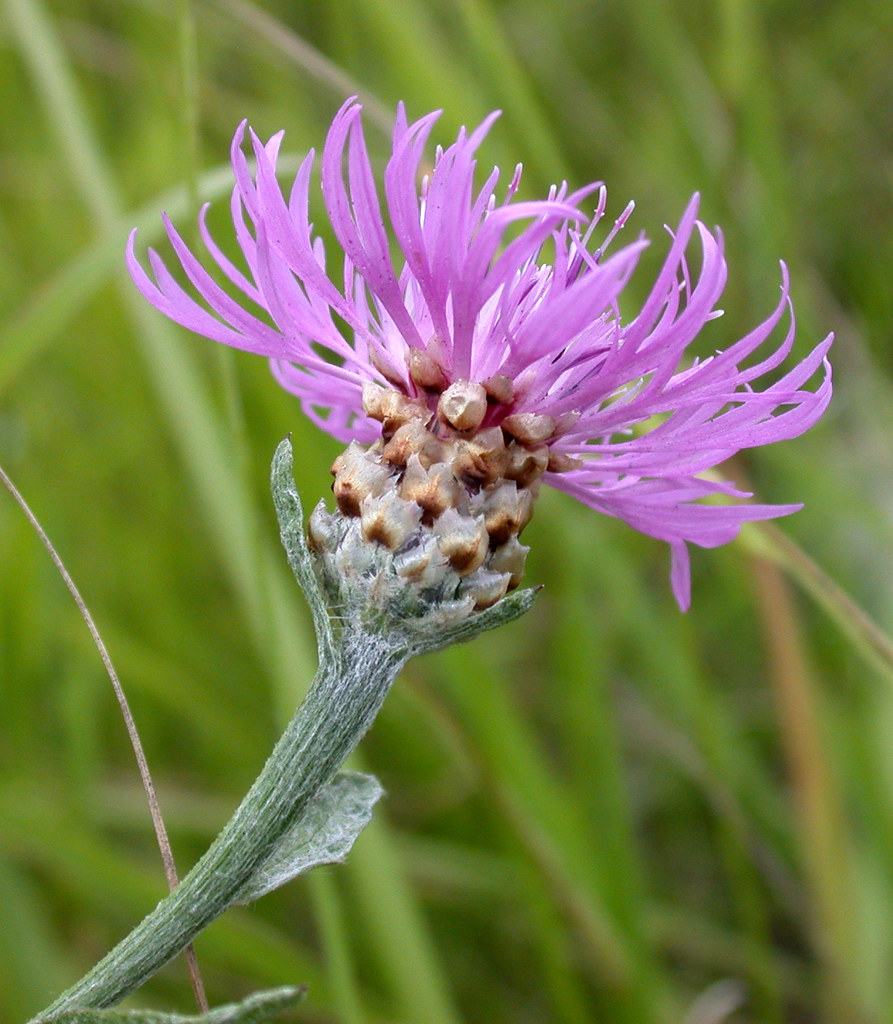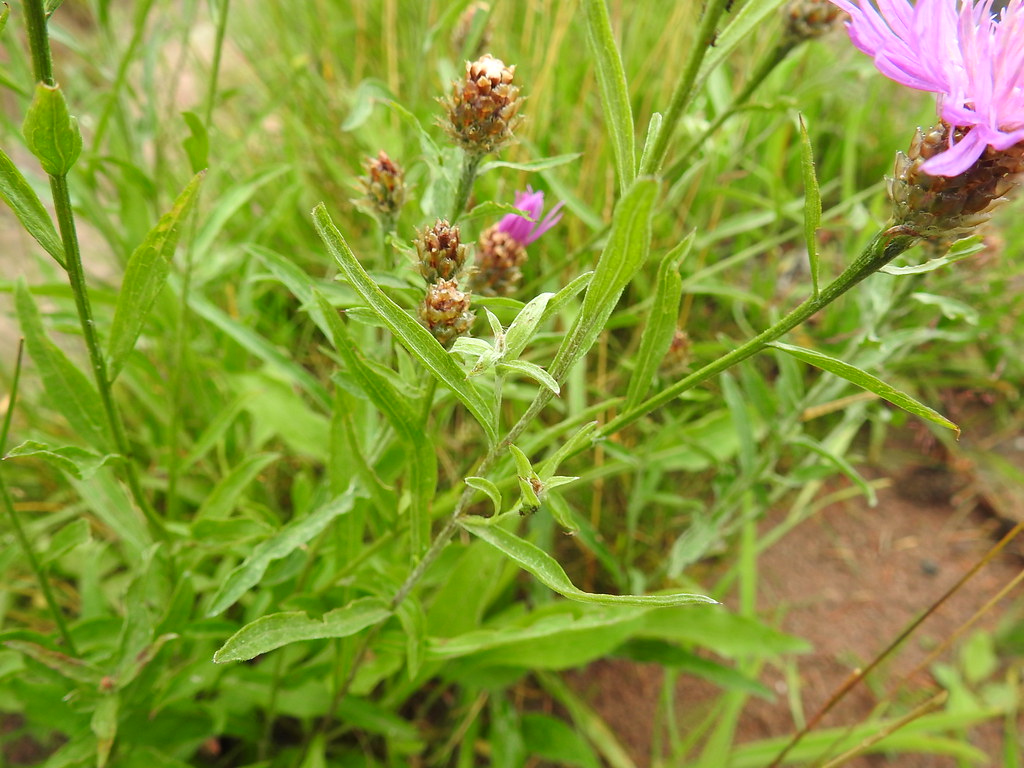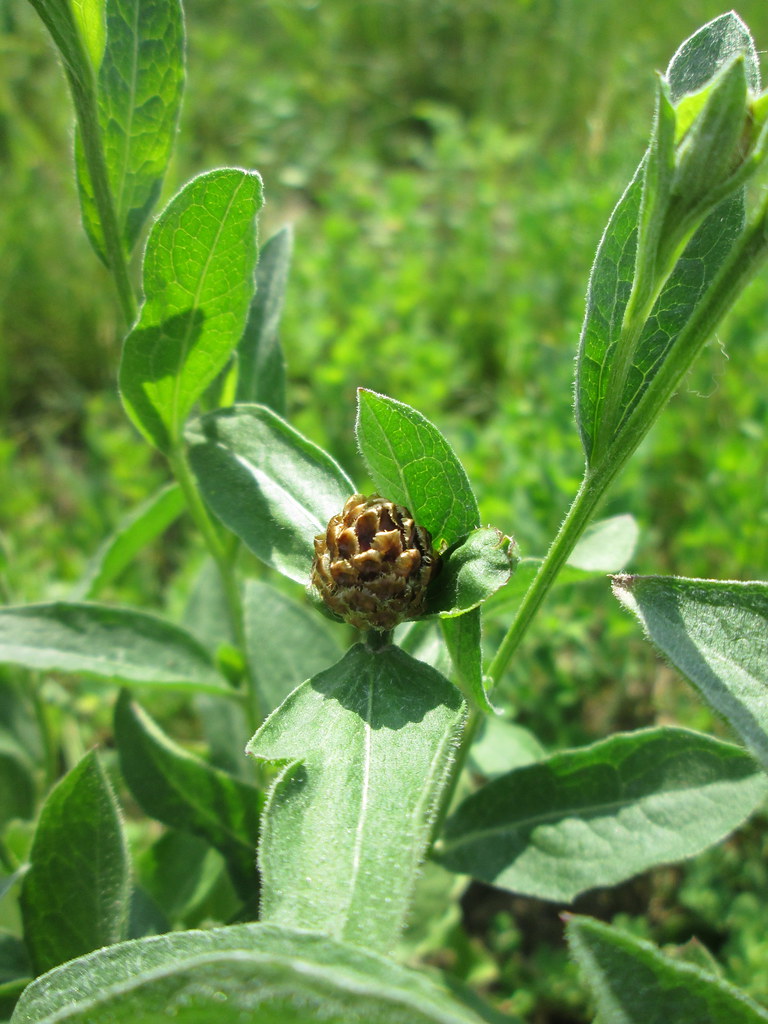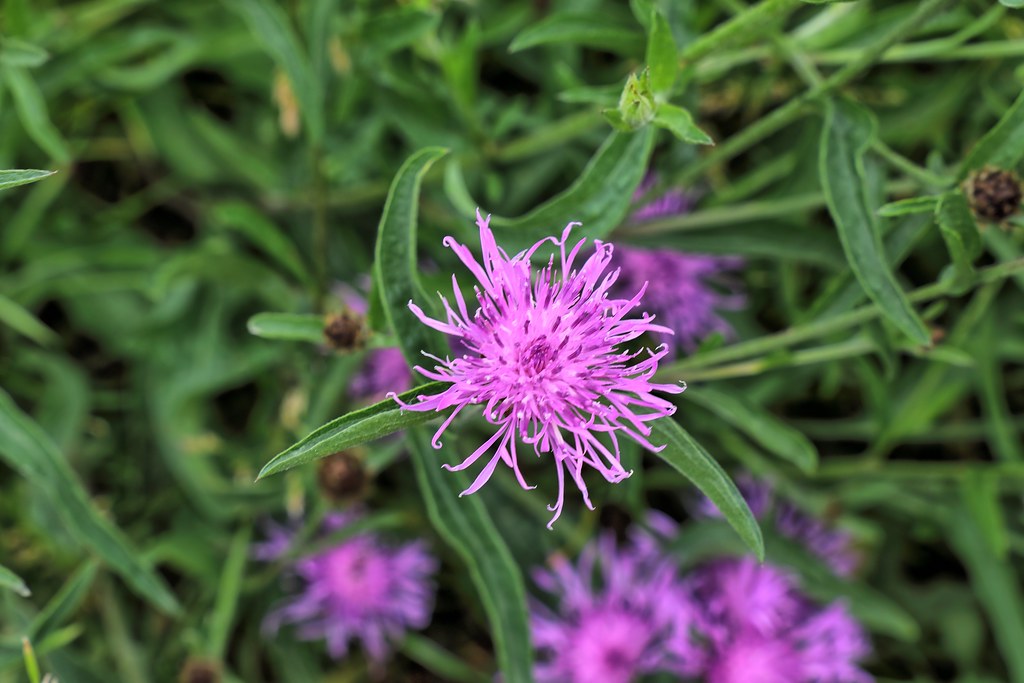Centaurea jacea
Identification
- Perennial plant that produces a basal rosette in the first year, and flowers in later years
- While many other knapweed species grow in dry environments, brown knapweed can also grow in wetter, more shaded areas.
- Leaves are lance-shaped, lower leaves may have shallow teeth or lobes.
- Flowers are pink-purple.
- Compared with spotted knapweed (Centaurea stoebe), the bracts on brown knapweed heads are lighter brown in color.
- While many knapweed species have pointed bracts, brown knapweed bracts are blunt and papery at the tip.
- Stems are ridged, may be covered with fine silvery hairs, may be rough-textured, or have a purple tinge.
- Plants can grow up to four feet tall.
- A hybrid between Brown knapweed and Black knapweed (C. nigra), called Meadow knapweed (Centaurea x moncktonii) can have a similar appearance to Brown knapweed.
Introduction and spread
- Native to Europe
- This plant may have been brought to North America for ornamental use.
- Now present across the east and west coasts of the United States, and in parts of Canada.
Consequences of invasion
- Brown knapweed can outcompete native species, decreasing biodiversity and ecosystem health.
Status in the CKISS region
- Brown knapweed is currently classified as Contain within the CKISS region on the CKISS Annual Priority list.
- It has only been detected in the Nakusp Invasive Plant Management Area. The goal is to contain currently infested areas and to not allow further spread. CKISS is taking steps to monitor and manage this species in this area.
- Brown knapweed is classified as Prevent in the remaining parts of the region where it is not currently found. If you find this species in the Creston, Kaslo, Lower Arrow, Nelson, or Slocan areas, please report your sightings immediately.
- To learn more about how CKISS classifies and manages invasive species, see our Invasive Species Priority Lists page.
Integrated pest management options
Prevention
- Spreads mainly through seeds, so preventing seed production and dispersal is key.
- Prevent an existing infestation from spreading by ensuring that tools, equipment and vehicles are free of seeds after working or playing in an infested area.
- Do not grow this plant in your garden or share it. Check out other PlantWise options.
Mechanical treatment
- Hand-pulling or digging can be effective for brown knapweed, but be sure to remove the entire root and securely dispose of all parts of the plant.
- All landfills within the RDCK and RDKB accept invasive plant species for free. Ensure your material is bagged in clear plastic bags and notify the attendant that you have invasive plant species. Plants must be identifiable through the bag. For more information please see the RDCK Resource Recovery Bylaw.
- Mowing or cutting this plant is not effective, as plants will re-sprout or flower below the cut.
- Mowing plants which have already flowered could also spread seeds across a larger area.
Biocontrol
- A fly species called Urophora jaceana was released as a biocontrol in BC.
- These flies lay their eggs in the buds of brown knapweed flowers, which decreases the number of seeds produced by the plant.
- These flies have not been observed recently in BC, so it is believed that they did not establish after release.





